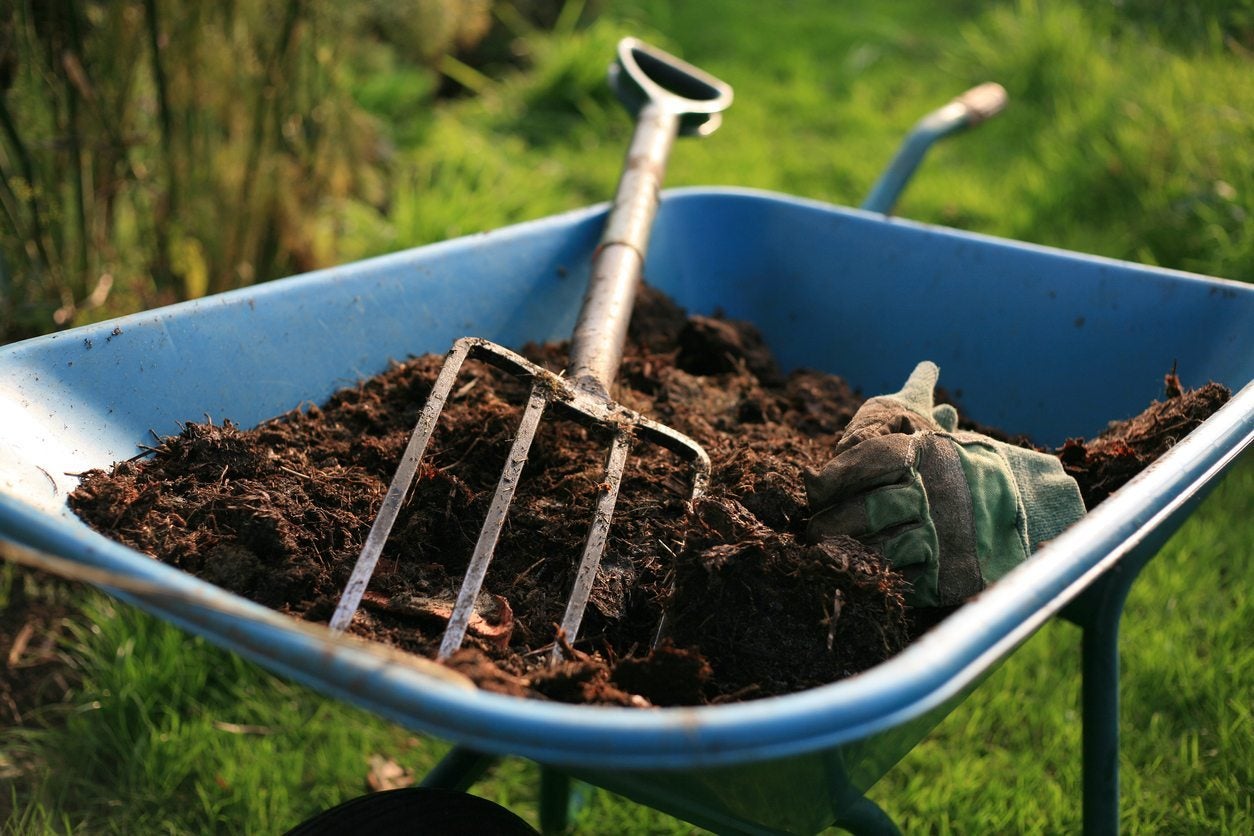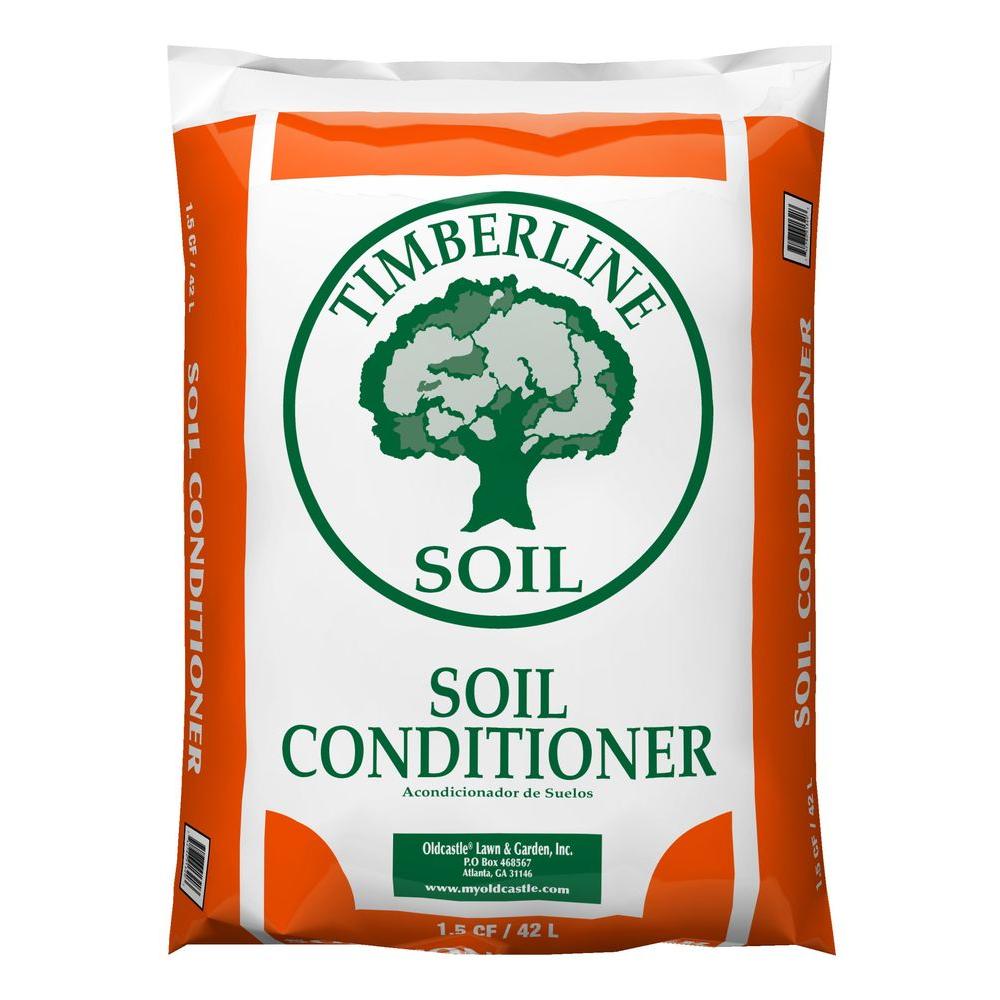Gardening is as much about the soil as it is about the plants. Soil conditioners are key to transforming average soil into a thriving ecosystem for your plants. But what exactly are soil conditioners, and why are they so crucial?
Definition and Purpose of Soil Conditioners
Soil conditioners, also known as soil amendments, are materials added to soil to improve its physical properties. These include enhancing soil structure, aeration, water retention, and nutrient content. The main purpose is to create an optimal environment for plant roots, ensuring healthy growth and robust yields.
Importance of Soil Health in Gardening
Healthy soil is the foundation of a successful garden. It’s alive with microorganisms that decompose organic matter, recycle nutrients, and promote plant health. Poor soil health can lead to weak plants, reduced growth, and increased susceptibility to pests and diseases.
| Aspect | Poor Soil | Healthy Soil |
|---|---|---|
| Structure | Compacted, poor drainage | Loose, well-draining |
| Nutrient Content | Low, imbalanced | Rich, balanced |
| Microorganisms | Sparse, inactive | Abundant, active |
| Plant Health | Weak, prone to disease | Strong, resilient |
By understanding and using soil conditioners, you can significantly improve your garden’s productivity and sustainability.

Source Image: www.gardeningknowhow.com
Organic Matter as Soil Conditioners
Organic matter is the lifeblood of healthy soil. Incorporating organic soil amendments can bring numerous benefits to your garden.
Benefits of Adding Organic Matter to Soil
Organic matter improves soil structure, increases water retention, and provides essential nutrients. It also encourages beneficial microbial activity, enhancing soil fertility over time.
| Benefit | Description |
|---|---|
| Improved Structure | Organic matter helps bind soil particles, creating a crumbly texture. |
| Water Retention | It increases the soil’s ability to retain moisture, reducing the need for frequent watering. |
| Nutrient Supply | Organic matter slowly releases nutrients as it decomposes. |
| Microbial Activity | It promotes a healthy population of soil microbes. |
Types of Organic Soil Amendments
- Compost: Rich in nutrients and beneficial microorganisms.
- Manure: Adds nutrients and organic matter but should be well-aged to avoid burning plants.
- Peat Moss: Improves soil texture and moisture retention but can lower pH.
| Amendment | Nutrient Content | Best Use |
|---|---|---|
| Compost | Balanced, high organic matter | General soil improvement |
| Manure | High nitrogen | Boosting nutrient-poor soils |
| Peat Moss | Low nutrients, acidic | Improving texture in alkaline soils |

Source Image: www.homedepot.com
Benefits of Soil Aeration
Soil aeration is critical for root health and overall plant growth. Compacted soil can suffocate roots and reduce nutrient uptake.
Importance of Soil Aeration for Plant Growth
Aerated soil allows roots to access oxygen, nutrients, and water more effectively. It also promotes the activity of beneficial microorganisms that help decompose organic matter and recycle nutrients.
| Benefit | Impact on Plants |
|---|---|
| Oxygen Availability | Promotes healthy root respiration and growth |
| Nutrient Uptake | Enhances root access to soil nutrients |
| Microbial Activity | Increases the breakdown of organic matter |
Techniques for Improving Soil Aeration
- Tilling: Breaking up soil to reduce compaction.
- Aerating: Using tools to create small holes in the soil to allow air, water, and nutrients to penetrate.
| Technique | Advantages | Disadvantages |
|---|---|---|
| Tilling | Quick way to loosen soil | Can disrupt soil structure |
| Aerating | Improves aeration without major disruption | May need specialized equipment |
Improving Soil Structure with Soil Conditioners
Soil structure refers to how soil particles bind together and aggregate. Good soil structure enhances water retention, drainage, and root penetration.
Role of Soil Structure in Water Retention and Drainage
Proper soil structure ensures that water is retained adequately while excess water drains away, preventing root rot and other water-related issues.
| Soil Type | Water Retention | Drainage |
|---|---|---|
| Clay | High | Poor |
| Sandy | Low | Excellent |
| Loamy | Balanced | Good |
Using Amendments to Correct Soil Texture
Different soil textures require different amendments to improve structure:
- Sand: Adds porosity to clay soils, improving drainage.
- Clay: Adds moisture retention to sandy soils.
- Silt: Balances drainage and retention in loamy soils.
| Amendment | Improves | Ideal For |
|---|---|---|
| Sand | Drainage | Clay soils |
| Clay | Water retention | Sandy soils |
| Silt | Balance | Loamy soils |

Source Image: landscapearchitect.com
Nutrient-Rich Soil Amendments
Nutrients are essential for plant growth, and adding nutrient-rich amendments can greatly enhance soil fertility.
Adding Essential Nutrients to Soil
- Bone Meal: High in phosphorus, promoting root growth and flowering.
- Blood Meal: High in nitrogen, boosting leafy growth.
- Fish Emulsion: Provides a balanced nutrient profile.
| Amendment | Primary Nutrient | Use |
|---|---|---|
| Bone Meal | Phosphorus | Root and flower development |
| Blood Meal | Nitrogen | Leafy green growth |
| Fish Emulsion | Balanced | General nutrient boost |
Balancing Soil pH with Lime and Sulfur
Soil pH affects nutrient availability. Lime raises pH, making acidic soils more alkaline, while sulfur lowers pH, making alkaline soils more acidic.
| Amendment | Effect on pH | Best Used For |
|---|---|---|
| Lime | Raises pH | Acidic soils |
| Sulfur | Lowers pH | Alkaline soils |
Humic Substances and Their Role in Soil Health
Humic substances, including humic and fulvic acids, play a crucial role in soil health by enhancing nutrient uptake and improving soil structure.
Benefits of Humic Acids and Fulvic Acids
- Humic Acids: Improve soil structure, increase nutrient availability, and enhance water retention.
- Fulvic Acids: Facilitate nutrient uptake and stimulate microbial activity.
| Substance | Benefits |
|---|---|
| Humic Acids | Enhance soil structure, nutrient availability |
| Fulvic Acids | Boost nutrient uptake, microbial activity |
Sources of Humic Substances
- Leonardite: A natural mineral rich in humic acids.
- Compost: Contains both humic and fulvic acids as it decomposes.
| Source | Humic Content | Use |
|---|---|---|
| Leonardite | High | Soil amendments and conditioners |
| Compost | Moderate | General soil health improvement |

Source Image: austinscountrystore.co.uk
Soil Conditioners
Biochar as a Soil Conditioner
Biochar, a form of charcoal used as a soil amendment, has gained popularity for its numerous benefits.
Properties and Benefits of Biochar
Biochar improves soil structure, increases water retention, and enhances nutrient availability. It also sequesters carbon, contributing to climate change mitigation.
| Property | Benefit |
|---|---|
| Porosity | Improves soil aeration and water retention |
| Nutrient Holding | Retains nutrients for plant use |
| Carbon Sequestration | Reduces atmospheric CO2 levels |
Improving Soil Fertility and Water Retention with Biochar
Adding biochar to soil can significantly enhance its fertility and moisture-holding capacity, making it ideal for both dry and nutrient-poor soils.
| Effect | Impact |
|---|---|
| Fertility Boost | Provides long-term nutrient storage |
| Water Retention | Reduces irrigation needs |
Incorporating Microbial Soil Amendments
Beneficial microorganisms are essential for soil health, aiding in nutrient cycling and disease suppression.
Role of Beneficial Microorganisms in Soil Health
Microorganisms decompose organic matter, fix nitrogen, and promote plant health by outcompeting harmful pathogens.
| Microorganism | Function |
|---|---|
| Bacteria | Decompose organic matter, fix nitrogen |
| Fungi | Decompose complex organic compounds |
| Actinomycetes | Decompose tough organic materials |
Using Microbial Inoculants and Mycorrhizal Fungi
Microbial inoculants add beneficial bacteria and fungi to the soil. Mycorrhizal fungi form symbiotic relationships with plant roots, enhancing nutrient and water uptake.
| Inoculant | Benefit |
|---|---|
| Rhizobia | Fix nitrogen in legumes |
| Mycorrhizae | Enhance nutrient and water uptake |

Source Image: www.natureslawn.com
Cover Crops as Soil Conditioners
Cover crops, grown primarily to cover the soil rather than for harvest, offer numerous benefits for soil health.
Benefits of Cover Cropping for Soil Health
Cover crops improve soil structure, prevent erosion, and enhance nutrient content. They also suppress weeds and promote biodiversity.
| Benefit | Description |
|---|---|
| Erosion Control | Roots hold soil in place |
| Weed Suppression | Dense growth shades out weeds |
| Nutrient Addition | Decompose to add organic matter and nutrients |
Nitrogen-Fixing Cover Crops
Legumes, such as clover and beans, fix atmospheric nitrogen into the soil, enriching it for subsequent crops.
| Cover Crop | Benefit |
|---|---|
| Clover | Fixes nitrogen, adds organic matter |
| Beans | Fixes nitrogen, improves soil structure |
Green Manure as a Soil Conditioner
Green manure involves growing plants specifically to be tilled back into the soil, enriching it with organic matter and nutrients.
Incorporating Plant Residues for Soil Improvement
Green manure crops are grown and then incorporated into the soil, adding organic matter and improving soil structure.
| Benefit | Description |
|---|---|
| Organic Matter | Adds bulk and improves soil structure |
| Nutrient Cycling | Returns nutrients to the soil as plants decompose |
Nutrient Cycling and Organic Matter Addition with Green Manure
Green manure crops decompose quickly, providing a rapid influx of organic matter and nutrients to the soil.
| Green Manure Crop | Benefit |
|---|---|
| Mustard | Adds organic matter, suppresses soil pests |
| Buckwheat | Adds organic matter, improves soil fertility |

Source Image: www.wellparkgardencentre.co.uk
Mulching as a Soil Conditioning Technique
Mulching involves covering the soil surface with organic or inorganic materials to improve soil health.
Benefits of Mulching for Soil Moisture Conservation and Weed Suppression
Mulching conserves moisture, reduces weed growth, and improves soil structure as organic mulches decompose.
| Benefit | Description |
|---|---|
| Moisture Conservation | Reduces evaporation, retains soil moisture |
| Weed Suppression | Blocks light, inhibiting weed growth |
| Soil Structure | Improves as organic mulches decompose |
Types of Mulch Materials
- Straw: Effective for moisture retention and weed suppression.
- Wood Chips: Long-lasting, improve soil structure as they decompose.
- Leaves: Readily available, enrich soil with organic matter.
| Mulch Material | Benefit |
|---|---|
| Straw | Retains moisture, suppresses weeds |
| Wood Chips | Slow to decompose, improves soil structure |
| Leaves | Adds organic matter, readily available |
Vermicomposting and Worm Castings
Vermicomposting involves using worms to decompose organic matter, producing nutrient-rich worm castings.
Benefits of Vermicompost for Soil Health
Vermicompost enhances soil structure, increases nutrient availability, and promotes beneficial microbial activity.
| Benefit | Description |
|---|---|
| Nutrient-Rich | Provides a balanced nutrient profile |
| Microbial Activity | Boosts beneficial microorganisms |
| Soil Structure | Improves as worm castings add organic matter |
Using Worm Castings to Improve Soil Structure and Fertility
Worm castings are an excellent soil amendment, enhancing soil fertility and structure with a concentrated source of nutrients.
| Effect | Impact |
|---|---|
| Nutrient Boost | Provides essential nutrients in a readily available form |
| Soil Improvement | Enhances soil texture and structure |

Source Image: www.walmart.com
Soil Conditioners
Soil Conditioners for Specific Soil Types
Different soil types have unique challenges, and specific soil conditioners can address these effectively.
Addressing Challenges of Sandy, Clayey, and Loamy Soils
Each soil type benefits from tailored amendments to improve structure and fertility.
| Soil Type | Challenge | Solution |
|---|---|---|
| Sandy | Low water retention | Add organic matter, clay |
| Clayey | Poor drainage, compaction | Add sand, organic matter |
| Loamy | Balanced but may deplete nutrients | Regular addition of compost, organic matter |
Tailoring Soil Amendments to Soil Characteristics
Understanding your soil’s unique characteristics helps in selecting the most effective amendments.
| Characteristic | Amendment | Benefit |
|---|---|---|
| Low Nutrients | Compost, manure | Adds essential nutrients |
| Poor Drainage | Sand, organic matter | Improves aeration and drainage |
Sustainable Practices in Soil Conditioning
Sustainable soil conditioning practices help preserve environmental quality while enhancing soil health.
Using Locally Sourced and Renewable Soil Amendments
Local and renewable amendments reduce environmental impact and support sustainable gardening practices.
| Practice | Benefit |
|---|---|
| Local Sourcing | Reduces carbon footprint, supports local economy |
| Renewable Resources | Minimizes environmental impact |
Reducing Environmental Impact with Organic Soil Conditioning Methods
Organic methods reduce reliance on synthetic inputs, promoting a healthier ecosystem.
| Method | Benefit |
|---|---|
| Organic Amendments | Enhance soil health without synthetic chemicals |
| Crop Rotation | Reduces pest buildup, improves soil structure |

Source Image: www.greensat.in
Testing and Monitoring Soil Health
Regular testing and monitoring of soil health ensure optimal plant growth and productivity.
Conducting Soil Tests to Assess Nutrient Levels and pH
Soil tests provide valuable information about nutrient availability and pH, guiding effective soil management.
| Test | Purpose |
|---|---|
| Nutrient Test | Determines nutrient levels in the soil |
| pH Test | Measures soil acidity or alkalinity |
Monitoring Soil Moisture and Compaction Levels for Optimal Plant Growth
Regular monitoring helps maintain ideal soil conditions for plant health and productivity.
| Monitoring Parameter | Importance |
|---|---|
| Soil Moisture | Ensures adequate water for plant growth |
| Compaction | Prevents root restriction and poor aeration |
By understanding and implementing these soil conditioning practices, you’ll create a thriving garden environment that supports healthy, robust plants.

